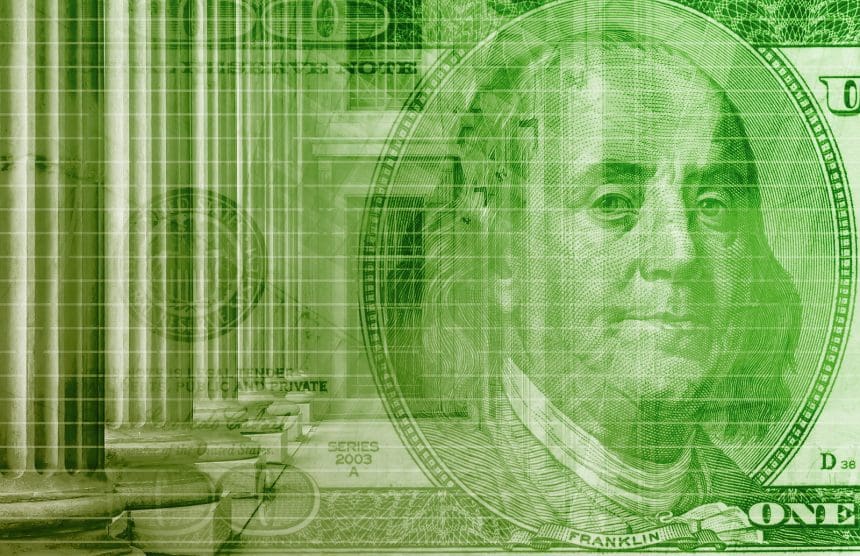US Dollar: From Low to Rebound – A Roller Coaster Journey in 2025
(STL.News) US Dollar – The US dollar has experienced a remarkable trajectory over the past few months, initially dropping significantly earlier this year before rebounding sharply in July. As of August 2025, the currency’s performance remains a subject of intense scrutiny, with experts divided on what lies ahead for the greenback. This article provides a closer examination of the U.S. dollar’s performance since its low point earlier this year, its recovery in the summer months, and the factors that may influence its future direction.
US Dollar – A Challenging Start to 2025
At the beginning of 2025, the US dollar experienced one of its worst periods in recent memory. The US Dollar Index (DXY), a measure of the dollar’s strength against a basket of six major currencies, fell by almost 11% in the first half of the year. This decline marked the worst performance since 1973, when the dollar faced similar pressures in the wake of the Nixon administration’s decision to abandon the gold standard.
Several factors contributed to the dollar’s struggles. The U.S. federal deficit was on the rise, tariffs continued to escalate, and political uncertainty weighed heavily on investor sentiment. Market participants were also concerned about the Federal Reserve’s future actions, particularly regarding potential interference in monetary policy by political leaders. This environment led to a general bearish outlook for the dollar.
US Dollar – July Rebound: The Dollar’s Best Month in Three Years
However, by the end of July, the dollar had staged an impressive recovery, regaining some of its lost ground. The US Dollar Index rose by 3.2%, its best monthly performance in three years. This bounce-back came after a combination of economic factors bolstered investor confidence. A stronger-than-expected GDP growth report signaled that the U.S. economy was performing better than anticipated, providing support for the dollar.
Additionally, market reactions to new tariffs and the Federal Reserve’s monetary stance added to the dollar’s recovery. Investors began to position themselves for a potentially stronger dollar, anticipating that the Fed would continue to prioritize economic stability over political pressure, despite growing concerns about the central bank’s independence.
The Impact of Weak Economic Data: A New Setback for the US Dollar
Despite the strong recovery in July, the dollar faced fresh challenges in early August. A disappointing July jobs report revealed that the U.S. economy had added only 73,000 jobs in the month, far below the expected 200,000. This weaker-than-expected data sparked concerns about the strength of the labor market and raised doubts about the sustainability of the economic recovery.
This news led to renewed bearish sentiment, with the dollar falling by 0.6% in the following week. The weak jobs data fueled fears that the U.S. economy could be on a slower growth trajectory than previously thought, which in turn dampened demand for the dollar. Coupled with these economic concerns, political issues continued to stir uncertainty in the markets. Investors remained uneasy about the potential for political interference in Federal Reserve policy, with some speculating that President Trump’s recent criticisms of Fed Chairman Jerome Powell could lead to destabilizing moves.
Year-to-Date Performance: A Volatile US Dollar
As of August 2025, the US Dollar Index has fallen approximately 9.5% year-to-date, reflecting a challenging year for the currency. This performance highlights the ongoing challenges faced by the dollar, driven by both domestic and international factors. Political uncertainty, fiscal policy, and trade tensions with major partners have continued to put downward pressure on the dollar, despite the broader economy showing signs of resilience.
International factors have also contributed to the dollar’s volatility. The global economic recovery has been uneven, with some regions performing better than others. In particular, the European Union and Japan have shown signs of strength, which has led to a stronger euro and yen relative to the dollar. This shift has contributed to the dollar’s overall decline in 2025.
US Dollar – Political Influence on the Dollar: The Trump Factor
One of the most significant factors impacting the dollar’s performance in 2025 has been the political environment. President Donald Trump has been vocal in his criticism of the Federal Reserve, particularly its chairman, Jerome Powell. Trump has repeatedly called for lower interest rates, arguing that a weaker dollar would benefit U.S. exporters and improve the country’s trade balance.
These statements have caused market volatility, as investors worry about potential changes to the Federal Reserve’s policy direction. While the Fed has thus far resisted political pressure, the specter of political influence over monetary policy remains a key concern for investors. The uncertainty surrounding the Fed’s independence has contributed to the bearish sentiment surrounding the dollar, as markets attempt to gauge the extent of the president’s potential influence over the central bank’s decisions in the coming months.
Global Economic Concerns and the US Dollar’s Future
Looking ahead, the outlook for the US dollar remains uncertain. On the one hand, the strength of the U.S. economy, bolstered by strong consumer spending and resilient corporate earnings, suggests that the dollar could regain some of its losses. On the other hand, persistent political risks, concerns about the labor market, and the potential for further trade disruptions could keep the dollar under pressure.
Many analysts predict that the Federal Reserve will continue to take a cautious approach to interest rate hikes, especially in light of recent economic data. A lower interest rate environment tends to make the dollar less attractive to investors, as returns on U.S. assets become less competitive compared to those in other countries. This could exert further downward pressure on the dollar in the short term.
Moreover, the global economic landscape remains a key factor to watch. If other regions, particularly the European Union and Asia, continue to recover at a faster pace than the U.S., the dollar could face continued headwinds. A weaker dollar could also lead to rising inflation in the U.S., as the cost of imports increases. This could force the Federal Reserve to take action, either by raising interest rates or intervening in currency markets, further complicating the dollar’s outlook.
Conclusion: A Year of Uncertainty for the US Dollar
The US dollar’s performance in 2025 has been marked by volatility, with sharp swings between highs and lows. From its low point earlier in the year to its recovery in July, the dollar has faced a range of challenges, from weak economic data to political interference with Federal Reserve policies. As of August, the dollar’s year-to-date performance reflects ongoing uncertainty, with analysts divided on what the future holds.
While the dollar’s long-term outlook remains uncertain, investors and market participants will continue to closely monitor economic data, political developments, and the actions of the Federal Reserve. The fate of the greenback in the coming months will likely depend on how these factors evolve, making it a crucial area of focus for anyone with an interest in global finance. As always, staying informed and prepared for further fluctuations in the dollar’s value is essential for those navigating today’s complex financial markets.
© 2025 STL.News/St. Louis Media, LLC. All Rights Reserved. Content may not be republished or redistributed without express written approval. Portions of our content may be created with the assistance of AI technologies, like Gemini or ChatGPT, and are reviewed by our human editorial team. For the latest news, head to STL.News.






